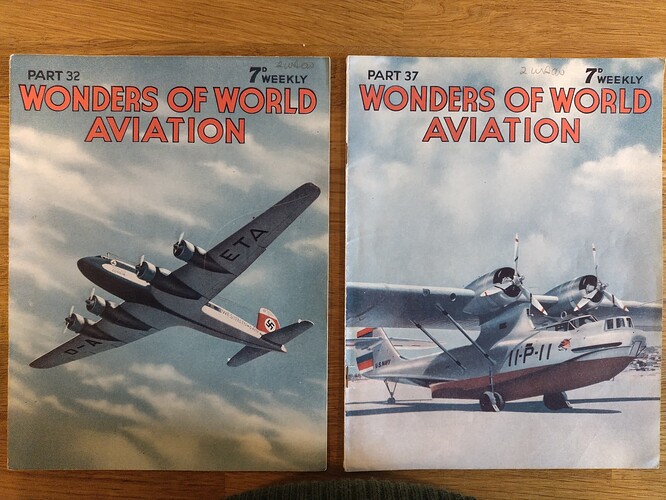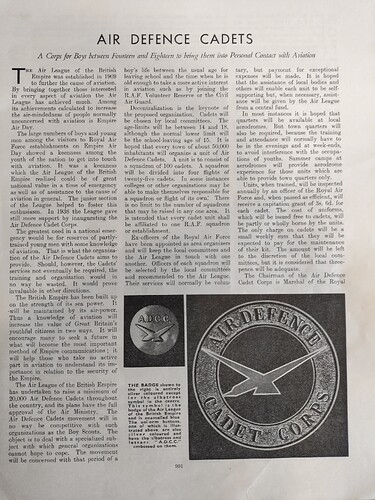I picked up these magazines at the Manston aviation museum. They are from an aviation encyclopaedia partwork of 1939 - note the tail emblem on the Lufthansa FW200 Condor.
Inside the copy with the Catalina on the front cover is this article about the RAFAC’s founding organisation, the Air Defence Cadet Corps.
The retro-futurist bird on the ADCC’s otherwise similar cap badge is an albatross, noted in the captions as being the symbol of the Air League of the British Empire.
It is well worth reading the article in order to gain a contemporary insight into the motives for forming the Corps, without the omissions and bias of subsequent historical revisionism.
What is written here regarding the training in drill, PT and aeronautical studies can pretty much describe what we are doing in the present day, though.
What is different to our day is the ADCC’s raison d’etre as described here: providing reserves if partly-trained young men with some knowledge of aviation which would be of great value to the nation in a time of emergency.
The writer also states that the British Empire, having been built up by its sea power, will be maintained by its air power, the latter becoming the most important method of Imperial communications.
What is ironic, of course, is that the young man featured in the ADCC uniform photo may well have joined the RAF or FAA later on in WWII, with all what that would have involved. Hopefully he survived his war service, which would have meant that during the majority of his service or civil aviation career he would have seen the end of the British Empire: the partition of India, the Malayan Emergency and that country’s independence, various other conflicts such as those in Kenya, Cyprus and the Aden Protectorate… Palestine and the Canal Zone … the Korean War if one served in the FAA.
That last conflict was the first big one of the Cold War, not to mention the Berlin Airlift, and the list goes on and on.
Interesting times for a young man to live in, but not those that a member of the Air League of the British Empire would have either predicted or wanted. We should be thankful to them for forming the Corps and its excellent aeronautical training programme, which has stood the test of time and major historical events.
In contrast to the recent post in The Staff Mess which shows a post-WWII article about the ATC, the ADCC sensibly neither confirms nor denies that it is a recruitment agency for the RAF, despite their intended affiliation to that service. The article in the ATC Gazette pretty much does say they intend cadets to join the RAF. The Air League rightly predict the expansion of aviation in an era of pioneering flights across the globe, but it was also an era of national air carriers, with the word ‘British’ in their titles. ![]()


